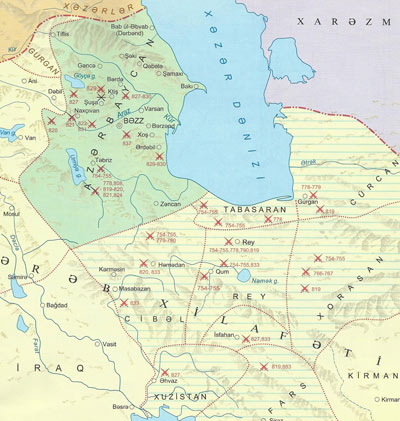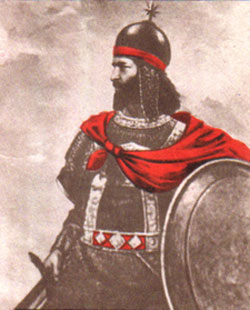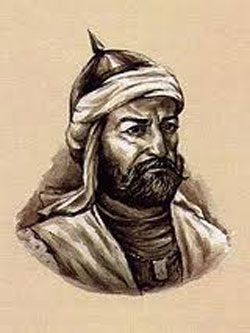Home page
» HISTORY
» Mass movements
» People revolts
People revolts   At the end of the fourteenth century, the political and religious movement directed against the Teymurids – hurufism spread in Azerbaijan. Hurufism was connected organically with the movement of mazdakism, akhilism and khurramism. Algas Mirza supported by Shirvan rulers began a revolt against the power of the Safavids in 1547. Despite the assistance of the Crimean khan, Alqas Mirza defeated and fled to Istanbul. The mass uprising of the population against feudal exploitation took place in 1571 in Tabriz. The city remained in the hands of rebels for two years. In 1573 Army of I Tahmasib could hardly suppress this movement. More than 160 activists of the uprising were executed in the town square. In 90-es of the sixteenth century Jalairis movement was widespread in Eastern Anatolia. At the beginning of the XVII century, this movement spread to Azerbaijan and neighboring countries. Jalairis group consisted of Azerbaijani peasants and refugees of Turkey and Iran. Shah Abbas I initially supported Jalairs in the fight against Ottoman troops. As Jalairs could not receive the expected benefits from the ordinary service for Shah in 1610 for most of them left the Safavid state. In Shirvan the rebellion against Safavids took place in 1615-1616 led by Malik Piri most known as Crazy Malik. Soon rebels joined with the people of the province Dangie near Ganja and killed Ganja ruler Mohammed Khan Ziyadoglu Qajar, and established contacts with Georgian insurgents. Having heard that rebellion became widespread Shah I Abbas sent big forces against them. Though Shah tried to arrest Crazy Malik, but he could escape to Dagestan. In 1625, in Karabakh, Yerevan and in the territory of the Ottoman Empire Mıkhly baba movement was widespread. Using support of the ruler of the Karabakh Davu Khan Mikhly baba called the population against feudal exploitation and clergymen. At the beginning of the XVIII century in various parts of Northern Azerbaijan – in 1707 in Jar and Balakan, in 1709-1711 in Jar, in 1709 and 1711 in Tabriz, in 1709-1715 in Soujubulagi and Mugan the local population in rebelled against the Safavids. The biggest of these rebellions was the uprising under the leadership of Haji David in 1720-1721. The rebellion covered Dagestan and North Azerbaijan. In 1973 in Bilecik village of Sheki province the population of the village rebelled against the Safavids. The inhabitants of the neighboring villages of Tala and Janik also joined the rebels. Peasant groups attacked on guards and Safavid officials. Nadir Khan had sent a big group of punishment in February 1735. As a result, 160 people of the residents of Tala and Jar were taken hostage. In 1938 the rebellion against Nadir Shah took place in Jar. Though his brother Ibrahim Khan hurried there with big forces but the rebels have destroyed this group, and Ibrahim Khan was killed. The rebellion was suppressed in 1741. In 1743 I and II Sam Mirza rebelled against Afshar state in Shirvan on behalf of pseudo –Safavids. Though these rebellions gained a success but it were suppressed by punishment group sent by Nadir Shah. In 1743 under the leadership of Haji Chelebi the uprising took place in Sheki. Rebels that gathered in fortress Come and see continued their rebellion against Nadir Shah up to 3 years. Giving a great importance to the suppression of rebellion Nadir Shah even self sent an Army in Sheki. There was a danger of killing Shah in one of the battles. Haji Chalabi was forced to surrender to Shah as his food reserves ended. In 1826 rebellion took place against the colonial oppression of tsar in Ganja. But the tsarist authorities suppressed it mercilessly. In 1830 Jar-Balaken people rebelled against colonial tyranny. Although there were many severe clashes between the troops of tsar and rebels, it was also suppressed in blood. In 1837 the rebellion took place in Guba led by Haji Mohammad and Yarali. More than 12 thousands rebels took part in the movement. Tsarist authorities had sent punishment groups equipped with artillery to suppress the rebellion. As a result, Guba rebellion was suppressed. Haji Mohammad was executed but Yarali managed to escape. In 1838 the rebellion took place in Sheki to restore the khanate. Son of Salim khan Mashadi Mohammed headed the rebellion. Rebellions could seize the town with the help of Dagestanıs. However, the Russian military called more troops and scotch the uprising in Sheki. In 1848-1852 in the South Azerbaijan the movement of Babis began against the government of the shah. More than 15 thousand babis took part in this rebellion which started from Zanjan. Shah could hardly to suppress this movement. The most spread form of fight against the government in North Azerbaijan at the last quarter of XIX century was gachaq movement. This movement covered all of Northern Azerbaijan. Population always supported gachags, that take revenge from tsarist officials and prevented the capture of gachags. Gachag Karam, Gachag Nabi, Tanriverdi Allahqulu oglu, Crazy Ali, Ganbar, Suleiman, Murtuza and other were popular in Northern Azerbaijan. In December 13, 1904 Baku workers went on strike. Their demand was the improvement of economic condition. Government signed joint agreement called Black Oil on December 30. On December 31 the strike ended with victory of strikers. On night of May 25, 1920 to May 26 revolt took place against the rule of the Bolsheviks in Ganja city. The number of those who participated in the rebellion reached 10 thousands. XI Army ruthlessly suppressed the uprising on May 31. More than 13 people were killed as a result of punishments. The major part of Azerbaijani Army in Garabagh consisting of 6 thousand soldiers began a mutiny against Bolshevik power in summer of 1920. In June 10, two regiment s of XI Army began an operation against them. Red Army seized in June 10 Agdam, in June 14 Khankendi and Shusha. Azerbaijani army retreated back to Jabrayil and left motherland. In Jun 5, 1920 the rebellion took place in Zagatala. The rebellion was led by a prominent figure of the Kars Democratic Republic, military man Ahmadiyev Hafiz Efendi. Soon the uprising covered Gakh. The movement was suppressed in June 18 by the Red Army forces.
|
